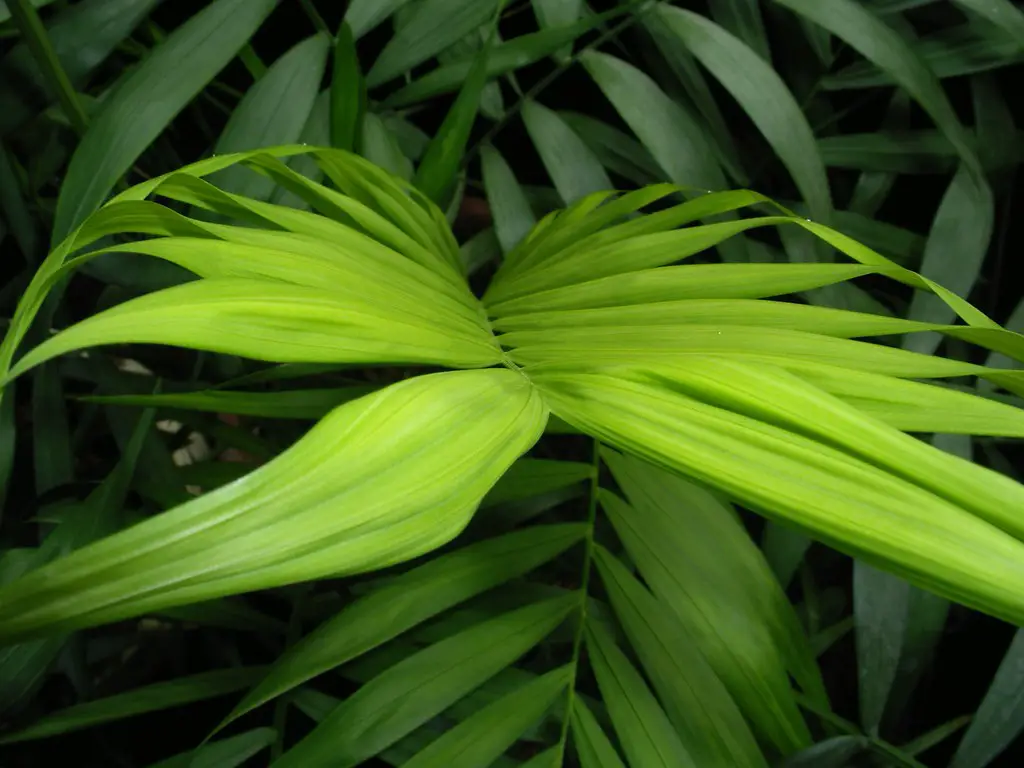The Parlor Palm, a beloved household plant, is prized for its elegance and adaptability. Known scientifically as Chamaedorea elegans, this graceful palm hails from the rainforests of Southern Mexico and Guatemala. It features arching fronds with delicate, light green leaves, making it a favorite decorative addition to homes, offices, and interiors.
With its ability to thrive in low light conditions and relative ease of care, the Parlor Palm has become one of the most popular indoor palms. This charming palm’s compact growth habit makes it suitable for small spaces, and it’s also known for its air-purifying properties.
Growing the Parlor Palm can be a rewarding experience, whether you’re a seasoned gardener or just starting out. Its elegant appearance and suitability for indoor environments have cemented its status as a classic choice for interior landscaping. Below, you will find comprehensive information on caring for and enjoying this beautiful palm.
| Aspect | Details |
|---|---|
| Common Names | Parlor Palm, Neanthe Bella Palm |
| Botanical Name | Chamaedorea elegans |
| Family | Arecaceae |
| Plant Type | Evergreen perennial |
| Mature Size | 2-6 feet tall |
| Sun Exposure | Low to bright indirect light |
| Soil Type | Well-draining, peat-based soil |
| Hardiness Zones | 10-12 (indoors: any zone) |
| Native Area | Southern Mexico, Guatemala |
Parlor Palm Care
The Parlor Palm is a low-maintenance plant that can adapt to various indoor conditions. It grows best in bright, indirect light, but it can tolerate lower light levels. Watering should be consistent but moderate, allowing the top inch of soil to dry out between waterings.
Providing the right soil, temperature, and humidity will ensure a healthy and thriving Parlor Palm. Its slow-growing nature and resistance to many common pests make it an attractive option for those looking for an elegant yet undemanding houseplant.
Light Requirement for Parlor Palm
The Parlor Palm prefers bright, indirect light but can tolerate low light conditions. Too much direct sunlight can scorch the leaves, while insufficient light may lead to slow growth and weak, leggy stems.
Soil Requirements for Parlor Palm
A well-draining, peat-based potting soil with added sand or perlite is ideal for Parlor Palms. This soil mix provides the right balance of moisture retention and drainage, crucial for the plant’s health.
Water Requirements for Parlor Palm
Water the Parlor Palm thoroughly when the top inch of soil feels dry. Overwatering can lead to root rot, while underwatering may cause the leaf tips to brown.
Temperature and Humidity
The Parlor Palm prefers temperatures between 65-80°F (18-27°C) and appreciates higher humidity levels. Mist the leaves regularly or use a humidity tray to maintain optimal moisture around the plant.
Fertilizer
Fertilize the Parlor Palm with a balanced liquid houseplant fertilizer diluted to half strength. Apply every 4-6 weeks during the growing season (spring and summer).
Pruning Parlor Palm
Remove yellow or brown fronds at the base to keep the plant looking fresh and healthy. Regular pruning is not necessary, as the plant grows slowly and maintains a compact shape.
Propagating Parlor Palm
Propagation is best achieved by dividing the plant at the roots. Carefully separate the clumps and plant them in appropriate soil. Provide consistent care as you would for a mature plant.
How To Grow Parlor Palm From Seed
Growing Parlor Palm from seed is a slow and challenging process. Plant fresh seeds in a well-draining mix, keep them warm, and maintain high humidity. Patience is required, as germination may take several months.
Common Pests & Plant Diseases
Spider Mites
Regularly check for spider mites, and treat with insecticidal soap if necessary.
Root Rot
Avoid overwatering and ensure proper drainage to prevent root rot.
Common Problems With Parlor Palm
Brown Tips
This can be a sign of low humidity or inconsistent watering. Increase humidity and monitor watering practices.
Yellow Leaves
Overwatering or inadequate light may cause yellowing leaves. Adjust care as needed.
Pro Tips
- Keep away from drafts and sudden temperature changes to avoid stress.
- Clean the leaves with a damp cloth to remove dust and maintain appearance.
- Avoid repotting frequently, as Parlor Palms prefer to be slightly root-bound.
- Choose a pot with drainage holes to prevent waterlogging.
- Place in a north or east-facing window for optimal light conditions.




